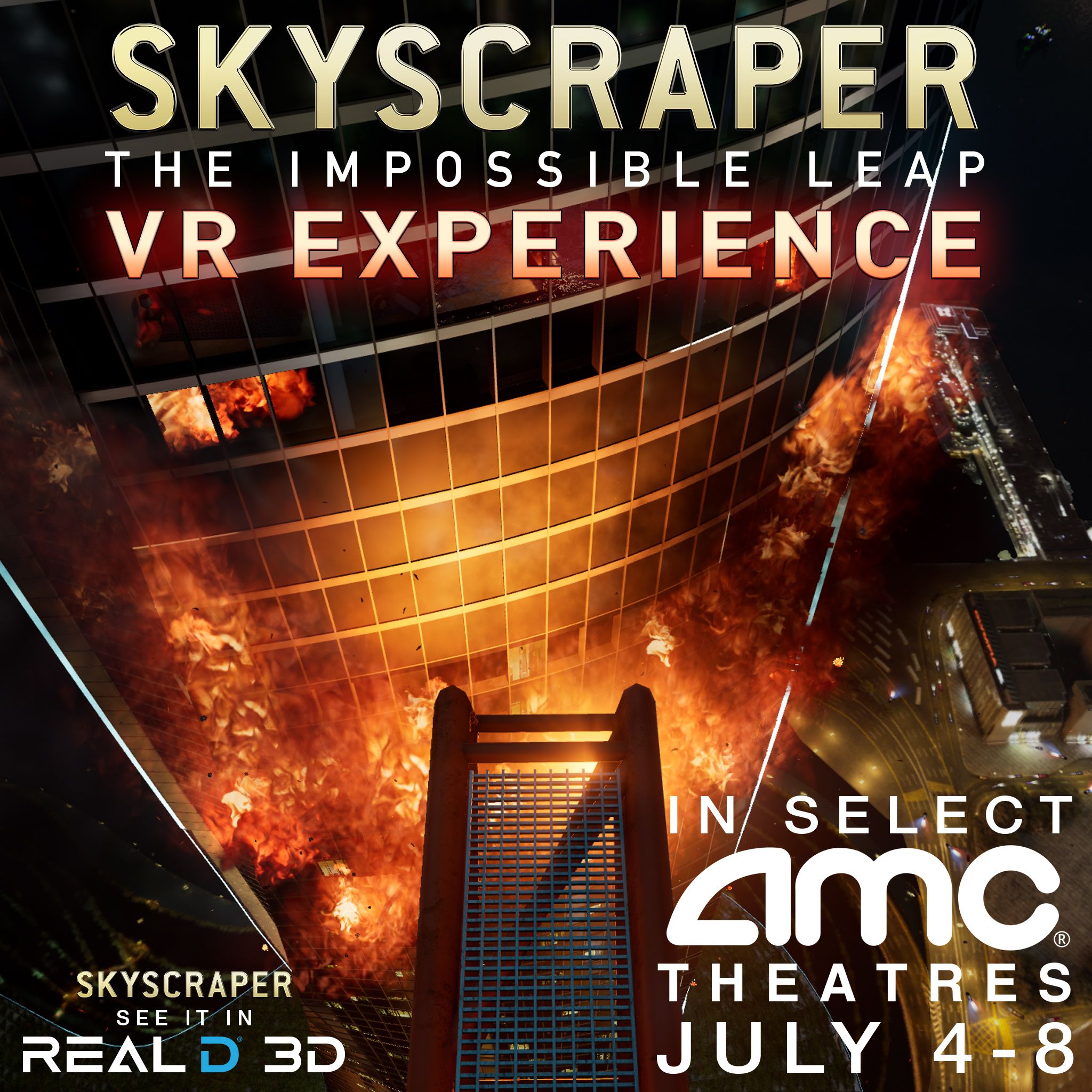When people ask me what inspired ALIBI to start looping game music, I can’t help but laugh just a bit as I tell them the story involves virtual reality, Dwayne Johnson, and a Lyft ride epiphany.
They’ll eye me with brows raised in typical WTF formation, and then I’ll explain.
Looping Game Music: An Idea’s ‘Virtual’ Spark
In 2017, I was introduced to the brilliant VR team at Create Advertising while attending Promax, an annual trade conference for entertainment marketers. Producer Pierre Gerber was there showcasing the interactive experience they had created for
on PlayStation. Immediately impressed, I asked him more about their VR work and we hit it off right away.He then introduced me to Create’s Head of Experiential, Jake Black, who showed me their VR experience for Sony Pictures’ film
. Suddenly, I was on a tightrope suspended impossibly high up between two buildings and attempting to cross, the tension mounting with each shaky step -- mind blown!These were the types of experiences CreateVR was developing to market a host of blockbuster films. And knowing how vital of a role music can play in setting tone theatrically, Jake and I began talking about possibly working together in the future. His team was already familiar with ALIBI on the movie trailer side of the business, so they knew the quality and intensity of our music was there.
“[ALIBI] had a good reputation for being cool, cinematic and intense,” Jake recalled. “And when we were building the Skyscraper VR – a pretty short-form experience – I knew it needed to be really high-impact and dramatic, and how 90 percent of that comes through the music.”
The Role Looping Music Plays in Interactive Experiences
was an experience CreateVR was developing to promote Universal Pictures’ over-the-top thrill ride of a film starring Dwayne Johnson. Jake already had an ALIBI track – – in mind when he told us about the opportunity. The challenge was finding an organic way to insert the music into the VR experience without it sounding like the track was simply repeating itself continuously, something that might become monotonous for any consumer trying it out.“For interactive work, [music] is always a little bit more complicated of a deliverable because you have to account for players,” Jake explained. “It’s not just something you play from start to finish and that’s it, so we asked for a couple of different versions that would loop at certain points, and then also stems for those loops.”
In other words, the music needed to be able to adjust to the players’ activity or lack thereof while helping to progress the story behind the experience. With such a unique request in front of us, this was the first time we discussed taking the stems and creating loops out of them, which could be triggered within the game by the game designers to create an adaptive playing experience.
It was also the first time we discussed making loop-based tracks specifically to solve the main problem game developers had with using production library music, as most libraries don’t offer loops of their tracks, and none of them provide looping stems.
“The tracks that do exist, most of it is either very generic or just bad quality, and it just lends a level of cheapness to anything that is jumped into,” Jake said. “So if you want to get a higher quality and you can't afford to pay a composer, it's hard to find that middle ground of high-quality library stuff that doesn't sound generic. That's part of the reason that we chose ALIBI, because I think ALIBI has a little more of a unique voice.”
Thankfully, ALIBI’s VP, Strategic Initiatives Kent Carter (who also happens to be a composer and lifelong gamer) has extensive experience in loop-based audio, so he brought this know-how into the project. What we ended up delivering was a looping version of the track Jake liked in stems format, meaning drums, bass, synths and orchestral instruments were their each individual audio files that could be faded in and out, so the music could be made adaptive to the game play.
As a result, the music ALIBI provided for the Skyscraper experience set the tone for the whole thing, progressing the plot by cluing players into the intensity level of each scene and helping to sell that over-the-top, superhero feel inherent to blockbuster action movies.
“It’s a test for future ways to market movies that are a little more out of the box than playing a trailer on TV,” Jake explained. “Ultimately, our barometer is whether those who try out these experiences actually enjoy and have fun with them, and that was a pretty resounding ‘yes’ in this case, as it was very fast and very intense. We were all pretty pleased with that in the end.”
Looping Game Tracks: Go Big or Go Home
While ALIBI definitely learned a lot working with CreateVR, what was most illuminating is that loop-based tracks would solve a huge problem, not just with the “Skyscraper” VR experience, but with all kinds of games on different platforms. I remember sitting in a Lyft with Kent, after having sushi in Culver City with the Create team to celebrate the project, and both of us feeling so excited about our new epiphany in regard to loop-based tracks for gaming.
For years, we had heard that production library music wasn’t formatted the right way to be used within games. Games evolve as the players live/die, win/lose or explore their environments. When we realized that using loop-based stems as different triggers worked so well for the “Skyscraper” VR experience, we knew we were onto something. We also realized we already had tons of great music already that could serve this purpose perfectly; we just needed to rework the audio to fit our new format to make it adaptive.
“It's exciting because you rarely feel like you're being listened to, let alone like have a real effect on how people operate, so it feels really gratifying to be heard,” said Jake. “And, not only that, but knowing the amount of work it would take to really build that library, No. 1 shows a lot of confidence on their part that they actually believe in this, and No.2 just feels pretty good to be part of a collaboration, even if only at the very beginning.”
Using GDC as a barometer to connect with and get feedback from game developers, we then set out to showcase that you could take one track and create an entire in-game musical experience at a very affordable cost. This is Hollywood-quality music any game developer can have access to, and now it is formatted in a way that is not just useful but also enhances the playing experience by making it adaptive to gameplay. The rest, as they say, is history.





